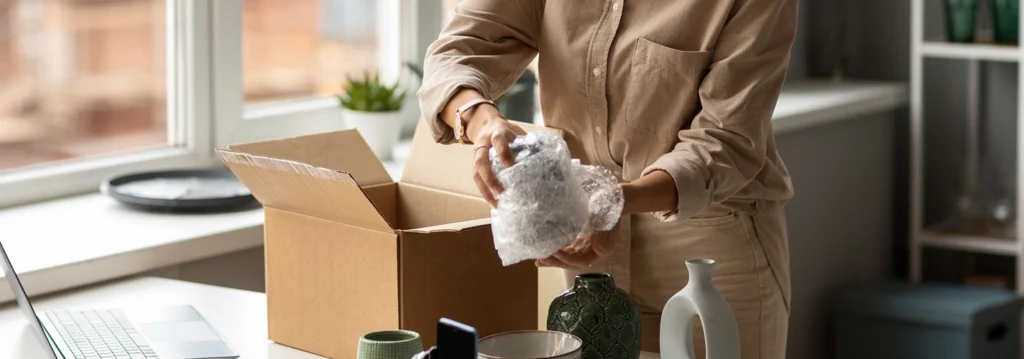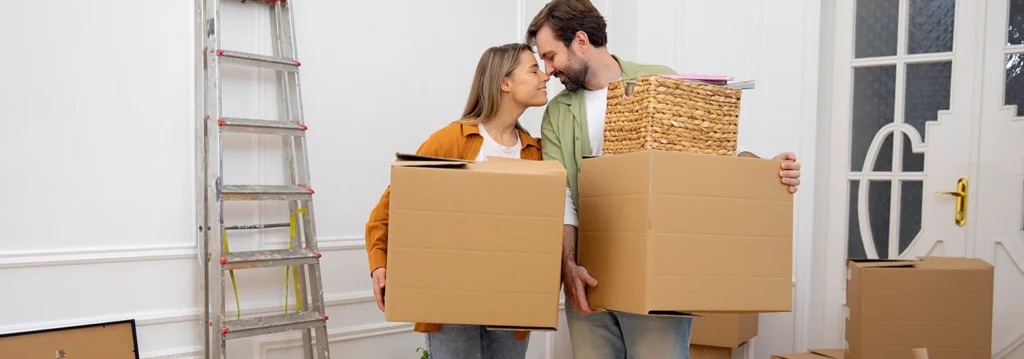When moving heavy furniture for the first time in Ottawa or any other location, it can be tough to know where to start. Without a proper plan, people often feel confused, which can lead to damage or accidents during the move.
In fact, CIHI (Canadian Institute For Health Information) says that about 13% of the 15 million visits to emergency departments each year are for injuries. These injuries often happen during home moves.
But you do not need to worry. As an experienced moving company, Economical Movers has completed 600+ moves since 2021. We have seen what works and what does not when it comes to handling furniture on your own. If you’re a DIY mover, this checklist will guide you through simple and practical steps.
In this blog, we will share what to do and what to avoid so you can manage your heavy furniture move with confidence and care.
When Do It Yourself Moving Options Work and When They Don’t
Before you start planning your move, it helps to know when a do it yourself approach makes sense and when it might not be the best idea. Every move is different, and understanding your own needs can save you time, effort, and money.

When DIY Moving Works Well
Do it yourself moving options are a great fit when you want to save money. You only need to rent a truck, get some basic equipment, and cover the cost of fuel. You also have complete control over your schedule and how your belongings are handled. If you’re confident in lifting and organizing things on your own or with help from friends or family, this method can work well.
When DIY Might Not Be the Best Choice
If you’re moving large or heavy furniture or you have a lot of stairs to deal with, a DIY move can be physically demanding. There’s a chance of hurting yourself or damaging your furniture or property. It also takes up more time than you might expect, especially if you’re juggling work or family responsibilities. Plus, without professional help, your items may not be covered by insurance during the move.
Best Situations for DIY Movers
- You’re moving a short distance.
- You have help from friends or family.
- You don’t have many large or fragile items.
- You’re comfortable driving a rental truck.
- You want to stick to a tight budget.
When It’s Better to Hire Professionals
- You’re moving long-distance or out of town.
- You have heavy items like a piano or large furniture.
- You’re on a tight schedule.
- You’re moving alone with no help.
- You want insurance coverage and experienced handling.
Is It Cheaper To Hire A Mover or Do It Yourself?
Many people wonder if moving heavy furniture by themselves saves money. It seems cheaper to do it yourself. You only pay for the truck, fuel, and some tools. However, there can be unexpected costs. You might damage your furniture or hurt yourself. Although hiring a professional moving company can be costly at first, it saves time and prevents mistakes. It all depends on your situation and what feels right for you.
What Is the Cheapest Method of Moving?
The cost of moving and the help you have will determine the most cost effective way to move. If you have a few heavy items and help from friends or family, renting a truck can be a cost effective option. However, it might be smarter to hire professional movers for part of the job. This is especially true if your furniture is heavy or you don’t have enough help. Consider your time, safety, and effort when finding what fits your budget and needs.
Your Complete Checklist of Do It Yourself Moving Tips
Planning your move is all about timing. To help you stay on track, here is our week-by-week guide. You can follow this guide to make your DIY move a success. Alright, let’s go over do it yourself moving tips.

1. Pre-Move Preparation (2 Weeks Before)
Key Tasks:
- Make a list of all heavy furniture pieces
- Measure each item along with doorways, stairwells, and hallways
- Declutter by selling or donating unwanted bulky items
- Gather essential tools and supplies in advance
Start by taking an inventory of all large and heavy furniture that you want to move. Measure these items along with all entry and exit points at both the current and new location. This will help avoid tight corners, blocked hallways, or last-minute dismantling. Decluttering is another important step. Let go of items you don’t use anymore to reduce load and save time.
Tools & Supplies to Gather:
- Furniture sliders
- Appliance or four-wheel dollies
- Moving straps and ratchet straps
- Furniture, blankets, and pads
- Screwdrivers, Allen keys, and basic tools
- Stretch wrap and bubble wrap
- Work gloves and sturdy footwear
2. Disassembling & Packing (1 Week Before)
Key Tasks:
- Disassemble large furniture
- Store screws and small parts in labelled bags
- Wrap and protect delicate surfaces
Disassemble anything that can be taken apart safely like beds, tables, or sectional couches. Keep all bolts, screws, and loose parts in labelled ziplock bags and tape them to the furniture. Wrap wooden and glass surfaces with moving blankets, stretch wrap, or bubble wrap. Mark fragile parts using painter’s tape for added visibility during loading.
3. Renting the Right Vehicle (5 Days Before)
Key Tasks:
- Choose a truck that fits your needs
- Look for a ramp or lift gate to load heavy items safely
A 16-foot box truck with a loading ramp is usually the right size for most medium sized home moves. Renting in advance ensures you get the vehicle that fits everything without needing multiple trips. Make sure to also reserve moving accessories like tie-down straps and loading ramps if not included.
4. Loading Day (Early Morning Start)
Key Tasks:
- Load heavy items first, closest to the truck wall
- Stack items properly and distribute weight evenly
- Use lifting straps and take regular breaks
- Keep the path clear to avoid tripping hazards
Start early in the day. Load heavier items first—upright and close to the truck’s wall for stability. Use moving straps and get help with lifting to prevent strain or injury. Remove drawers and tape them shut to avoid sliding. Once loaded, use ratchet straps to lock everything in place and prevent shifting during the drive.
5. Drive & Unload In Ottawa
Key Tasks:
- Drive carefully and avoid potholes or sharp turns
- Use a dolly to unload items without damaging floors
- Reassemble the must-use furniture first, like the bed or sofa
Drive slow and steady. Once at your new home, walk the path before unloading. Use a dolly and furniture sliders to protect the flooring. Focus on setting up essential furniture first so you have a place to rest. Other items can be arranged over time.
Final Tips To Make Your Do It Yourself Ottawa Move Easier

Focus on clear communication if you have helpers. Make sure everyone knows their role to avoid confusion. Take regular breaks to prevent fatigue, especially when moving heavy pieces. Keep snacks and water handy to stay energized. Double-check all your equipment before the move to avoid surprises. Finally, stay flexible. Unexpected things can happen and adapting calmly will keep your move on track.
Doing it yourself gives you control and can save money, but it requires thoughtful planning. Follow this week-by-week guide to reduce stress, avoid damage, and move safely. As movers who’ve helped hundreds of clients since 2021, we’ve seen how the right prep makes all the difference.
Let us know if you need support or want to rent professional grade tools for your move.
Final Words
Moving heavy furniture on your own isn’t easy, but with the right steps and tools, it can be done safely and efficiently. Whether you’re relocating within Ottawa or nearby, this checklist gives you a clear roadmap. Take your time, plan, and don’t hesitate to ask for help when needed. If you need extra support or want to rent reliable moving tools, Economical Movers is always here to assist.




One Comment
Good info. Lucky me I reach on your website by accident, I bookmarked it.